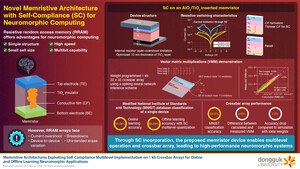Award-winning Processing Technique Cuts Out Noise from Real-world Images
SEOUL, South Korea, Jan. 20, 2020 /PRNewswire/ -- Denoising is a crucial process in devices that produce images. Scientists at Dongguk University proposed an upgraded method to remove noise from images, which efficiently produces high-quality images. This new method was ranked first place in a prestigious real-world image denoising challenge, called the NTIRE 2019 Real Image Denoising Challenge.
Modern electronic devices are capable of producing high-quality images, but the process of acquiring and processing images is complex. Sometimes, disruptions in image-producing signals lead to "noise," which causes the images to be blurry or of poor quality. To correct these "noisy" images, one type of approach involves the addition of synthetic noise to a noise-free image. But, this method is flawed, as these artificial noisy images are very different from real-word images. To focus on real-world images, another type of approach involves the use of an image acquisition algorithm, in which a ground-truth image (reflecting how reality looks) is converted to an artificially produced noisy image. The noisy, blurry image can then be reverted to the original, sharp image using the same algorithm. This technique is effective, but currently, it lacks a large enough dataset to denoise images efficiently.
In a new study in the 2019 IEEE/CVF Conference on Computer Vision and Pattern Recognition Workshops, researchers at Dongguk University in South Korea, led by Dr Seung-Won Jung, built a state-of-the-art image denoising method, which is much more efficient than previous methods. Dr Jung explains, "Real-world image denoising is still very challenging because we cannot obtain ideal pairs of ground-truth and real-world noisy images. Through our study, we wanted to resolve the issues faced by existing denoising methods."
For their study, the scientists used images from the database of the NTIRE 2019 Real Image Denoising Challenge. By generating a new computational architecture, which they called "group residual dense network," they augmented the existing dataset of real-world noisy and ground-truth images, which helped them achieve the highest possible level of peak signal-to-noise ratio and structural similarity. What's more, this new image-correcting method was even ranked first place at the NTIRE 2019 Real Image Denoising Challenge for its novelty and efficiency. Describing this method, Dr Jung says, "While previous research often used artificially produced noisy images, we built a database of real-world noisy images instead."
Removing noise is important for devices such as smartphones and digital cameras to produce high-quality images. By finding a more efficient denoising method, this study has possibly made significant advancements in the field of image processing. Dr Jung concludes by talking about the applications of the study, "We believe that our real-world noise modeling method can be extended to various applications, such as removing blur, aliasing, and haze in images produced by devices like mobile phones and cameras, showing its versatility."
Reference
Title of original paper: GRDN: Grouped Residual Dense Network for Real Image Denoising and GAN-based Real-world Noise Modeling
Author: Dr Seung-Won Jung
Affiliation: Department of Multimedia Engineering, Dongguk University, Seoul
Media contact:
Seung-Won Jung
[email protected]
+82 10-2231-4853
SOURCE Dongguk University

WANT YOUR COMPANY'S NEWS FEATURED ON PRNEWSWIRE.COM?
Newsrooms &
Influencers
Digital Media
Outlets
Journalists
Opted In





Share this article